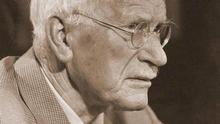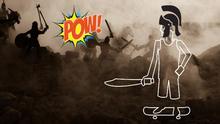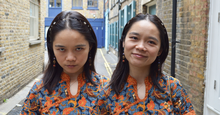Archetypes in Self-Image, Stereotypes, and Genuine Presence
In 2018, CAPT collaborated with Merle Singer on the Leadership Narratives study using the Pearson-Marr Archetype Indicator® instrument to explore how a volatile world is changing the leadership narratives for seasoned female professionals and early-career female and male millennials in corporate Australia and the United States. In the first article of this Research series, we discussed a number of insights concerning types of knowledge used by leaders. In this second article, we present a theme from the interviews focusing on the contrast between image and actual behavior, and a new expression of authenticity called genuine presence.
In analyzing the means for the archetype scales of the senior and millennial women in the Leadership Narratives study, we found the archetypes of Seeker and Lover had a higher placement for senior women than younger women in the study; the Caregiver archetype was higher for millennial women than senior women. Both differences in archetype means are statistically significant.
In interviews, many of the senior women participants who had the Caregiver archetype either very high or very low in her Archetype Profile mentioned it unasked. If Caregiver was very high, the response was one of frustration, haven't I outgrown that? If Caregiver was very low, the response was defensive, but I'm a good mother. For a few of the millennial women, only a low placement of Caregiver triggered unsolicited responses, though a high placement of this archetype did not. The Caregiver archetype scored high and low for a number of the millennial men in the study, but this did not bring out any comments.
Some of the senior women demonstrated a common misunderstanding of the PMAI® archetypes - discussed in this article - that a low scoring archetype means you do not possess the qualities it represents. The twelve archetypal characters are identified with by core traits or meaning of an archetype. To have Caregiver low in your profile does not mean you do not have the capacity to be nurturing; it means you do not hold your ability to be caring as central to your identity. If Caregiver is high in your profile, it indicates you probably consider your nurturing qualities and traits to be a core part of your identity. Wherever an archetype falls in your PMAI results, you have access to its qualities, though when placed in the lower ranks it will need more effort from you.
Clearly, Caregiver represents a societal expectation and a common stereotype of Western women. It may be that younger women are still working through female stereotypes, and thus are not uncomfortable with them, whereas senior women, especially ambitious women of high achievement, have spent more time battling societal expectations. Interestingly, this response from senior women indicates that the image of who a woman should be is still prevalent in corporate culture, even for successful female leaders.
Seeker and Lover, both higher in senior women, are a complementary pair that, when healthy, represent a balance of investment and focus on the self (Seeker) and on others and relationships (Lover). A Seeker's need for freedom to explore themselves and new possibilities needs to be compensated with the Lover's attention to the importance of relationships and commitments, otherwise the Seeker can end up alienated and alone. On the other hand, a Lover who has not invested in their own growth and self-possession risks being lost and powerless to relationships.
Being that the senior women as a group had both Seeker and Lover in the higher ranks of their profile indicates this healthy balance and links to an interview theme of genuine presence. Genuine presence emerged in contrast to concepts of authenticity, a concept typically based on personality traits. Genuine presence is not about fidelity to one's personality but fidelity to what is true and real in the moment. When genuinely present, we show up transparent to what is true for us (Seeker) while deeply present to others and our relationship with them (Lover). Both senior and younger women in the study referred to this capacity of genuine presence as increasingly important in leaders.
Conforming with stereotypes hinders genuine presence because the person identifies with the collective standards a stereotype represents rather than being transparent to their own actual needs, desires, opinions, and reactions in the moment. When any archetype is identified with as a stereotype (think Ruler and Warrior, for men and leaders generally, or Caregiver for women) within the PMAI archetype profile, it needs to be reflected on and worked through individually, ideally with a facilitator. Powerful insights into who we really are and want to be can come to us with these nuanced reflections on our archetypes and identities.














_thumb.png)












_thumb.png)
_thumb.png)
_thumb.png)


